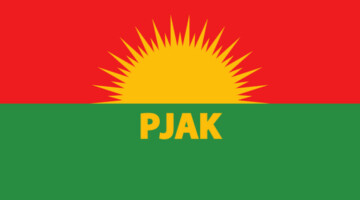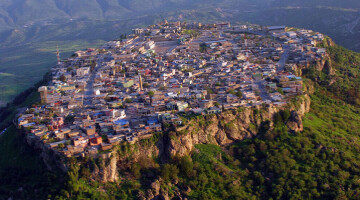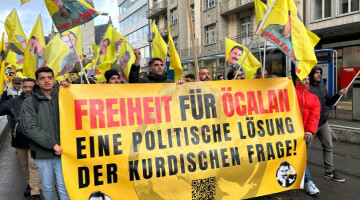The Roma Memory Studies Association (Romani Godi) has completed the human rights monitoring report titled ““Roma Communities in Turkey During The Recovery From the Covid-19 Pandemic”. The report was produced with the financial support of the European Union provided under the Etkiniz EU Programme.
According to the report, one of the most impoverished segments in the pandemic process in Turkey is the Roma communities. The growing poverty due to Covid-19 has further expanded and deepened the rights violations and existing problems that Roma are exposed to in many areas such as employment, education, health, housing and social assistance.
Unable to defend themselves in the face of these problems and violations, the Roma were also discriminated against and excluded.
During the pandemic, the problems and needs of the Romani communities were not sufficiently recognized by the public administration. Because, disaggregated data for ethnic, religious or linguistic minorities is not shared in Turkey. Therefore, the specific needs of groups such as the Roma cannot be determined in times of crisis such as pandemic.
As a result of the existing structural problems and the added needs of the Covid-19 pandemic, Roma communities should be supported by public measures so that the deepening problems do not become chronic and the existing widespread inequalities do not become permanent. Because the Roma cannot repair the damage of the pandemic without support.
STATE OF ROMA PEOPLE IN TURKEY AS IT LEAVES THE PANDEMIC BEHIND
- One of the most vulnerable groups during the pandemic was the Roma. Despite the fact that they are one of the largest minority groups in Turkey, the Roma do not have official minority status in the country.
- It was one of the groups whose poverty level has increased and deepened in the pandemic is the Roma communities.
- During the pandemic, Roma faced additional challenges in terms of employment, access to social services, education, housing, health.
- The Roma have faced many inequalities in the pandemic, including deep poverty, discrimination and stigmatization.
- The lockdown-quarantine practices during the pandemic process pushed Roma, who had problems in accessing employment, to a deeper poverty; during the pandemic, Roma began to have difficulty meeting even their basic needs.
- Pandemic related gender inequalities further exacerbated the existing inequalities faced by Roma women and girls.
- Despite some positive developments in social security, education, health and political participation, the Roma could not reach the status of equal and free citizens; their access to their rights is still limited.
THE PANDEMIC INTRODUCED NEW PROBLEMS INTO THE LIVES OF ROMA PEOPLE
- One of the reasons for the deepening and widening of the problems faced by the Roma is the lack of official data on the Roma population in Turkey. Roma communities should be supported by public policies so that the problems and inequalities that have been deepened during the pandemic do not become permanent.
- The Roma, who faced serious obstacles to accessing economic, social and cultural rights before the pandemic, were unable to access these rights during the pandemic. Excluded and marginalised during the pandemic, Roma communities were more exposed to adverse health conditions and socio-economic impacts.
- The Roma, one of the most disadvantaged groups in Turkey, could not defend themselves against the economic, social and health-related problems created by the pandemic. Roma women, children, older people, persons with disabilities, LGBTI+ were even more heavily affected by the economic and social problems created by the pandemic.
THE PROBLEMS FACED BY ROMA DURING THE COVID-19 PANDEMIC
- With a population of approximately 3 million to 6 million in Turkey, the Roma have faced many inequalities such as deep poverty, discrimination and stigmatization.
- The deep poverty suffered by Roma in the pandemic
- ‘According to the results of the “Roma Communities and Poverty Survey in Turkey” dated 2021, the average monthly income of Romani citizens is 1,426 TL.’
- “According to the same survey, 77.5% of the Roma experienced unemployment problems, 57.5 percent of them are renting, 83.2 percent of them are heating with a stove, and 59 percent of them did not consume meat even once a year.”
- The economic crisis after the pandemic has weakened Roma children’s acces to their right to education
- The children could not attend the lectures broadcast on television because some families did not have television or electricity in their homes.
- Roma, who suffered income loss during the pandemic process, were exposed to inequalities in accessing social assistance.
- According to the survey on Roma communities and poverty in Turkey, only 37.8% of Roma received aid from public or private institutions during the pandemic; 83.7% of aid was in kind aid.
- 10-15% of Roma in Turkey do not have access to health services at all; 20 to 30% have partial access.
DURING THE PANDEMIC, ROMA COMMUNITIES NEEDED MORE SOCIAL SUPPORT
- As a result of systemic direct and indirect discrimination, the Roma are pushed to work in precarious sectors as musicians, in the entertainment industry, in the service industry, as hawkers, paper collection for recycling, scrap dealers and in jobs that provide only a daily income.
- Therefore, the Roma have not been able to earn an income for a long time during the pandemic. As a result, their need for social assistance has increased significantly.
The Lack of a Social Policy Has Led to Violations of The Rights of Roma Communities
- The lack of official and disaggregated data on ethnic, religious or linguistic minorities in Turkey has led to the fact that the specific needs of the Roma during the pandemic were not sufficiently recognized and effectively met by the authorities..
- Due to inadequate social policies, the Roma were more negatively affected by the pandemic than other communities.
WHAT DID ROMANI CHILDREN EXPERIENCE IN THE PANDEMIC?
- The average income of parents of Roma children in public schools remained below the poverty line ; for this reason, families could not meet their children’s school needs.
- At least half of the Roma children living in poor houses did not have the technological devices to participate in distance education or did not have access to the internet.
- Dom children, one of the Roma communities, became the group with the highest dropout rates during the pandemic period.
- Since the children of Dom families could not attend distance education and their families became even poorer during this period, they left school and started working.
- Child poverty, which has deepened with the pandemic, has reached serious dimensions. Public measures must be taken so that the deep poverty does not encumber future generations!
DURING THE PANDEMIC PROCESS, ROMA COULD NOT ACCESS THEIR RIGHT TO HEALTH!
- The existing structural problems of the Roma caused the barriers they faced in the field of health to increase exponentially under the pandemic conditions.
- The Roma were segregated from the general population, could not adequately benefit from public infrastructure and sanitation services, had difficulty in accessing clean drinking water and were forced to live in areas where recycling materials were accumulated. All these conditions caused them to be more affected by the pandemic.
- Poverty, insecurity and sometimes, lack of identity papers have further increased the barriers to Roma access to their right to health.
The human rights monitoring report titled “Roma Communities in Turkey During The Recovery From the Covid-19 Pandemic” by Romani Godi, with the support of Impact EU Programme, can be accessed here















